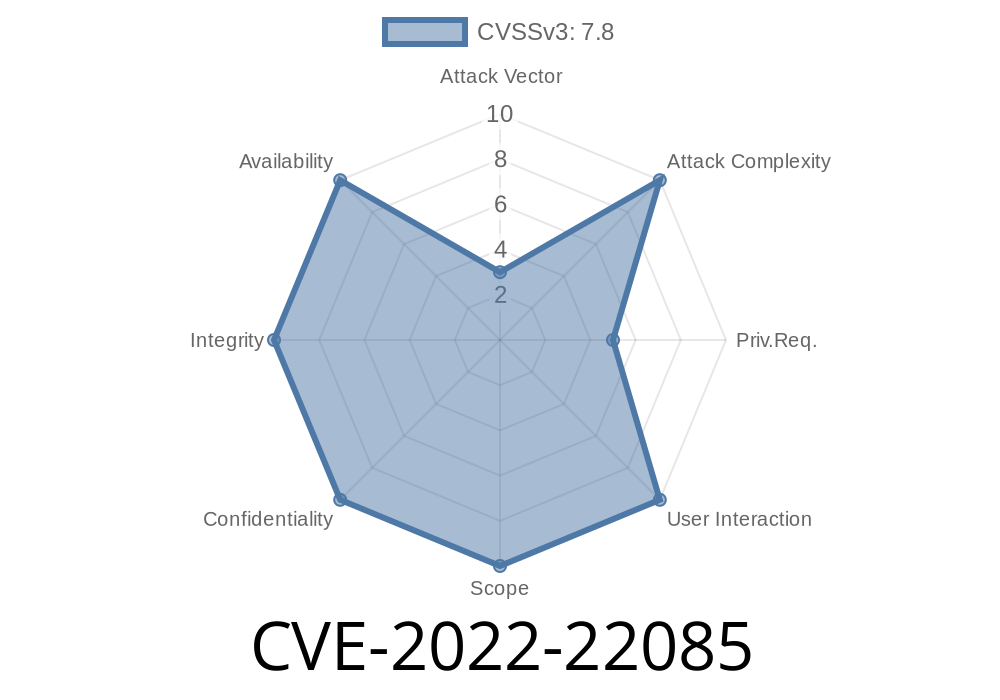Memory corruption in video processing has become a critical issue today. With the widespread use of Snapdragon platforms across various sectors, it is essential to address such vulnerabilities to prevent exploitation. This post explores the details of CVE-2022-22085, a memory corruption vulnerability that occurs due to a buffer overflow while reading a DTS file in multiple Qualcomm Snapdragon platforms. We will discuss the vulnerability's impact, the original references, a code snippet demonstrating the problem, and the exploit details associated with this issue.
Snapdragon Wearables
The exploitation of this vulnerability can potentially lead to unauthorized access, data leaks, or even system crashes. An attacker could exploit this memory corruption issue to gain control over the affected devices and compromise the systems' security and stability.
Code Snippet
The problem likely lies in the handling of the DTS file format and the associated memory allocation. Here's an example of how the code might look:
#include <stdio.h>
#include <stdlib.h>
#include <string.h>
#define DTS_HEADER_SIZE 32
#define BUFFER_SIZE 1024
void process_dts_file(const char *filename) {
FILE *file;
unsigned char header[DTS_HEADER_SIZE];
unsigned char buffer[BUFFER_SIZE];
size_t file_length, bytes_read;
file = fopen(filename, "rb");
if (file == NULL) {
printf("Error opening file %s\n", filename);
return;
}
fread(header, 1, DTS_HEADER_SIZE, file);
file_length = get_file_length_from_header(header);
while ((bytes_read = fread(buffer, 1, BUFFER_SIZE, file)) > ) {
process_buffer(buffer, bytes_read);
}
fclose(file);
}
void process_buffer(unsigned char *buffer, size_t buffer_size) {
// Process the DTS file data, leading to a potential buffer overflow
}
In this code snippet, the process_dts_file function opens and reads a DTS file. It reads the file header and then reads the file's data into a buffer in blocks of BUFFER_SIZE. The problem lies in the process_buffer function, where there may be a lack of proper bounds checking that could lead to a buffer overflow vulnerability.
The vulnerability was initially reported in the following sources
- CVE-2022-22085 - National Vulnerability Database
- Qualcomm Bulletin - November 2021
Exploit Details
An attacker could exploit this vulnerability by crafting a malicious DTS file that triggers a buffer overflow in the affected Snapdragon platform. By carefully manipulating the DTS file's contents, an adversary can control the overflowed buffer's content and potentially execute arbitrary code or corrupt the system's memory.
To successfully exploit this issue, an attacker needs a deep understanding of the specific Snapdragon platform and its memory management. The exploit's complexity may vary depending on the platform, the OS version, and the security features implemented in the system.
To prevent exploitation, it is highly recommended that developers and users apply the latest patches and updates from Qualcomm. Always be cautious when handling files from untrusted sources and maintain a proper security posture to minimize risks associated with vulnerabilities like CVE-2022-22085.
Timeline
Published on: 06/14/2022 10:15:00 UTC
Last modified on: 06/22/2022 16:23:00 UTC
